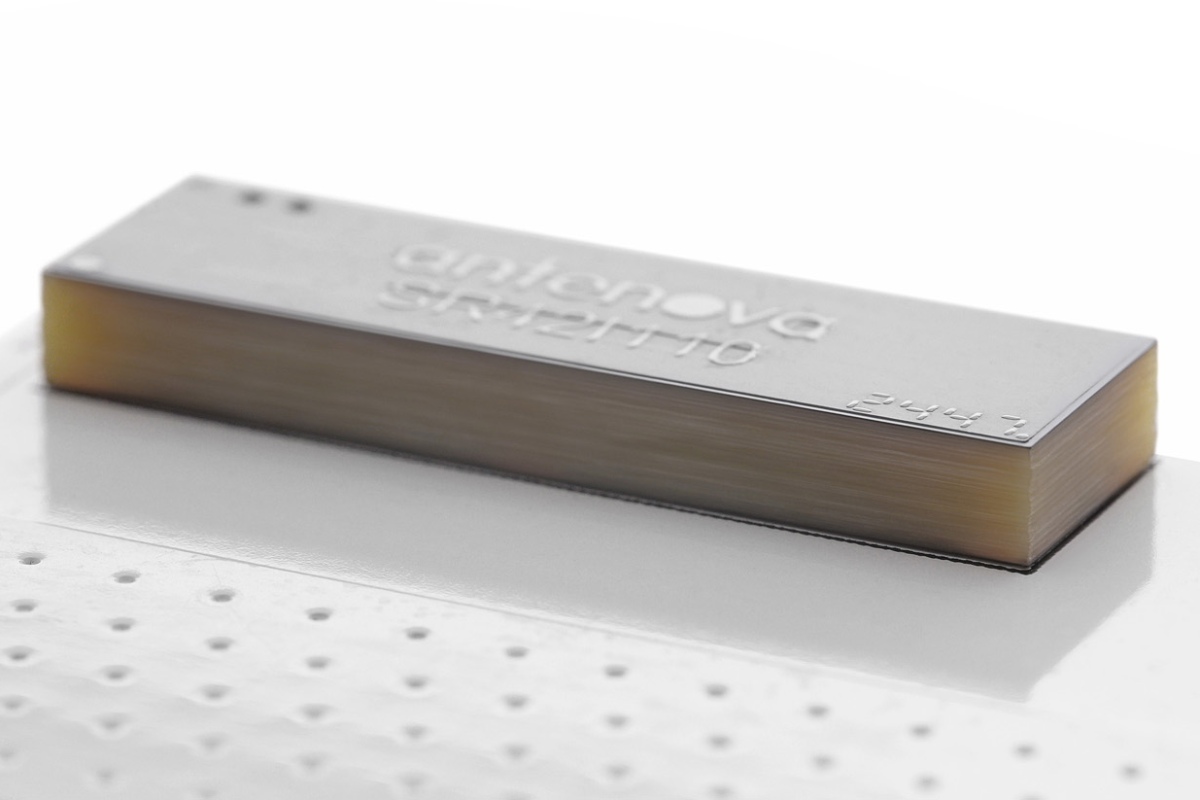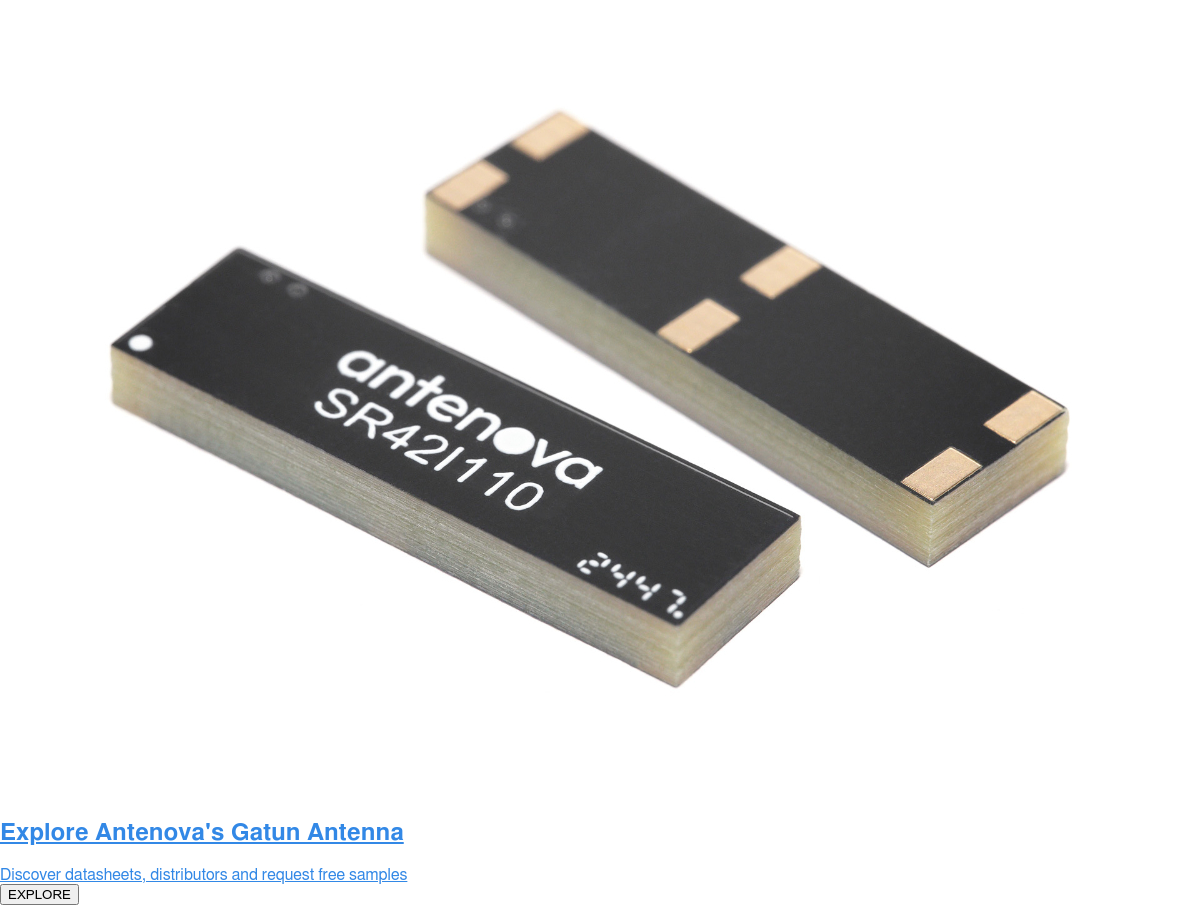The tradeoff between a small product size and long-range on an ISM network is a critical consideration. How can engineers maximise the transmission range on a LoRa network without increasing the product size?
Which bands are used for LoRa?
LoRa (Long Range) is a popular radio protocol that is operated on the license-free bands (ISM bands). Also there’s a less well known ISM protocol called MioTy that is comparable to LoRa. The ISM band is on 915MHz in North America, and 868MHz in Europe. ISM bands are used for a wide range of applications such as sensor networks in smart cities collecting air quality data, managing street lighting, as well as reading meters.
Comparison between ISM networks and cellular networks
Each device or node in the ISM network communicates back to a basestation in a star configuration, and a high efficiency antenna is required to maximise the range, this enables fewer ISM base-stations to be installed. ISM networks do not have license fees or cellular network fees, therefore ISM networks have lower costs than cellular networks. Also LoRa and MIoTy modules have lower power consumption than cellular modems.
Setting up a basestation network to collect data over ISM
For an ISM network, the number of basestations is determined by the range achieved between a node and the nearest basestation. A more efficient antenna will have longer range, so fewer basestations are needed to provide coverage across a region.
The cost of setting up an ISM network is related to the number of base-stations required, therefore in cities & suburban areas the setup costs are split between more nodes which reduces the cost per node. In rural areas more base-stations are needed to provide coverage across a region.
Determining the optimal ground plane length for an ISM device
A product with an SMD antenna uses the ground plane to provide the other half of the antenna, therefore the length of the ground plane affects the total product size. The ground plane length is determined by the lowest frequency used, the length is estimated from the formula, V = f * wavelength (“V” is the the speed of light 300,000km/s; “f” is a Frequency in MHz). The wavelength is the distance radio waves travel during one cycle.
Designing an antenna quarter wavelength long will provide the best efficiency and deliver the highest signal quality.
Quarter wavelength is calculated with the following formula:
Quarter Wavelength(mm) = (75/ FreqMHz)*1,000
For example, the wavelength of 915MHz is V/(915MHz) which is 327mm.
The required ground plane length for 915MHz SMD antenna is a quarter wavelength at 82mm.

Examples of 1/4 wavelength for 868 and 915 MHz
For all ISM antennas, there needs to be some space around the antenna so it operates efficiently, this is called the clearance area. For Gatun, there is a 15mm gap between the top of the PCB and the start of the ground plane, giving a total length of 82mm+15mm=97mm.
In practice, the ground plane needs to be longer than 97mm, the graph below gives the efficiency for different ground plane lengths. This graph below (source: Gatun datasheet) gives an efficiency of ~80% for a 110mm length PCB at 915MHz. From the graph, for a PCB length of 90mm, the efficiency is ~55%. This reduction in efficiency will reduce the maximum reception range.
Using an efficiency graph to choose product size
The tradeoff between a smaller product or a longer range is determined by whether the range reduction will increase the number of basestations required. As an example, an enclosure length of 100mm was chosen, this will result in an efficiency reduction from 80% to 55%, a reduction of 25%.
Efficiency at PCB lengths: 110, 100, 90, 80, 70, 60, 50mm

Conclusion
The range is related to the transmitted power, in general a 3dB power reduction will result in a range reduction of 30%. For a 25% power reduction, this could reduce range by around 15%. For a typical range of 1-2km for LoRa in a suburban environment, a range reduction of 15% is 2000*0.15=300m. In practice the range is dependent on other factors such as any buildings in the signal path.
There are other ways to mitigate a range reduction, such as improving the gain at the basestation. If a high peak gain antenna is fitted at the basestation, the range can be extended in one direction. A small Yagi antenna will have a gain of 6dB, a larger Yagi has gains of >9dB. However a basestation will need an omni-directional antenna, with a gain antenna pointed in towards the nodes further away.

The Gatun antenna enables products to be designed into smaller enclosures without affecting the range. Its main advantage over other ISM antennas is its high efficiency when the ground plane is shorter than optimum. This enables ISM products to be designed into smaller enclosures. Design assistance is given by Antenova, such as assistance with designing the matching networks.
Explore the Gatun Antenna: www.antenova.com/product/gatun/




